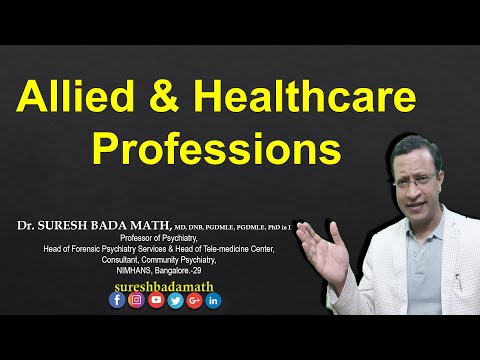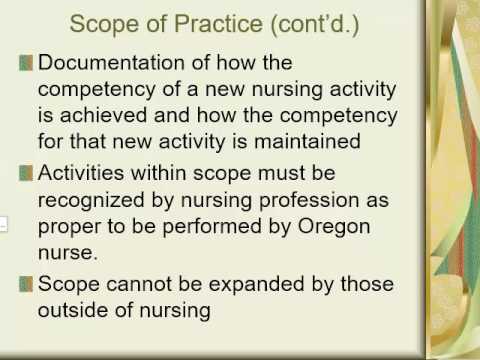What is Allied Health and Medical Assisting Services?
Contents [show]
Allied health and medical assisting services encompass a wide range of activities and occupations. These workers provide support to doctors, nurses and other medical professionals. They typically work in outpatient clinics, physician offices, hospitals and other healthcare facilities.
Checkout this video:
What is allied health?
Allied health is a term that encompasses a wide variety of healthcare professional roles. Medical assistants for example, are allied health professionals who play an important role in supporting doctors and other medical staff.
Allied health professionals typically have specialized training and skills, and they play an important role in the overall healthcare team. They often work closely with doctors, nurses, and other medical staff to provide care and support to patients.
There is a wide range of allied health careers, and the roles of allied health professionals can vary widely. Some common allied health careers include:
-Medical assistant
-Physical therapist
-Occupational therapist
-Speech therapist
-Nutritionist
-Dietitian
-Pharmacist
-Radiation therapist
-Respiratory therapist
What is medical assisting?
Medical assisting is a healthcare profession that involves performing administrative and clinical tasks in a medical office or clinic setting. Medical assistants are an important part of the healthcare team and perform a variety of duties to support doctors, nurses, and other medical staff.
Some of the duties of a medical assistant include scheduling appointments, taking patient medical histories, administering injections, measuring vital signs, and handling lab specimens. Medical assistants may also be responsible for coding and billing insurance claims, ordering supplies, and maintaining medical records
The scope of practice for medical assistants varies from state to state. Some states allow medical assistants to perform more advanced tasks such as giving medications or performing diagnostic tests, while other states limit their scope of practice to only administrative tasks.
Medical assisting is a growing profession with many job opportunities. According to the Bureau of Labor Statistics, employment of medical assistants is projected to grow 23 percent from 2019 to 2029—much faster than the average for all occupations.1 The demand for qualified medical assistants is expected to increase as the population ages and the need for health services grows.
The difference between allied health and medical assisting
Allied health and medical assisting are both terms used to describe support staff who work in the healthcare industry. The main difference between the two is that allied health professionals usually have more training and education than medical assistants.
Allied health professionals include everything from nurses and physical therapists to dietitians and social workers. Medical assistants, on the other hand, are typically responsible for administrative tasks, such as taking patients’ medical histories and scheduling appointments.
While there is some overlap between the two positions, allied health professionals generally have more direct contact with patients than medical assistants. As a result, they often play a more important role in patient care and treatment.
The benefits of allied health services
Allied health and medical assisting services are a vital part of the healthcare system, providing support to medical professionals and patients alike. These services can range from administrative tasks such as scheduling appointments and maintaining Medical records to more clinical tasks such as taking blood pressure readings and performing minor medical procedures.
There are many benefits to pursuing a career in allied health services. For one, it is a growing field with many opportunities for advancement. Additionally, allied health professionals often enjoy flexible schedules and good job security.
If you are interested in pursuing a career in allied health, there are many options available to you. With so many different specialties and sub-specialties, you are sure to find an area that interests you. Popular allied health fields include physical therapy, occupational therapy, speech therapy, and medical billing and coding.
The benefits of medical assisting
Medical assisting is a field of health care that involves working alongside licensed medical professionals to provide patient care. Medical assistants can be found working in a variety of settings, including hospitals, clinics, physician offices, and even in patients’ homes.
The duties of a medical assistant vary depending on their place of work, but they generally involve performing administrative tasks, such as scheduling appointments and filing insurance paperwork; handling patient phone calls and inquiries; and ensuring that the medical office runs smoothly. In some cases, medical assistants may also be responsible for basic clinical tasks, such as taking patient vital signs, preparing patients for examination, and assisting with minor office procedures.
While most medical assistants have at least a high school diploma, many choose to seek out formal training through an accredited medical assisting program. These programs usually last between one and two years and often result in the student receiving a certificate or diploma upon completion. Some medical assistants also choose to pursue further education by becoming certified through the American Association of Medical Assistants or the National Healthcare Association.
The benefits of pursuing a career in medical assisting are numerous. Medical assistants are in high demand due to the increasing number of baby boomers reaching retirement age and the changing landscape of health care. They also enjoy a relatively high rate of job satisfaction and earn a competitive salary. According to the Bureau of Labor Statistics, the median annual salary for medical assistants was $33,610 in 2016.
The challenges of allied health
Allied health and medical assisting services is a broad term that covers a wide range of occupations in the healthcare field. These occupations include but are not limited to: physical therapists, occupational therapists, speech-language pathologists, dietitians and nutritionists, physician assistants, and medical assistants.
The challenges of allied health include but are not limited to: a shortage of qualified workers, high turnover rates, and a lack of understanding of the scope of allied health occupations.
The challenges of medical assisting
Medical assisting is a challenging and rewarding career, but it’s not for everyone. If you’re considering this field, it’s important to be aware of the challenges you may face.
One of the biggest challenges of medical assisting is the fast-paced nature of the job. Medical assistants play a vital role in keeping the medical office or clinic running smoothly, and they need to be able to handle a variety of tasks at once. This can be overwhelming for some people, but if you’re good at multitasking and stay organized, you’ll do fine.
Another challenge is dealing with sick patients. As a medical assistant, you’ll be in close contact with sick people, and you may be exposed to diseases and infections. It’s important to take precautions to protect yourself, such as washing your hands often and wearing gloves when necessary.
If you have strong communication skills, are good at multitasking, and can handle exposure to sickness, then medical assisting may be the right career for you. It’s a challenging field, but it can be very rewarding.
The future of allied health
Allied health and medical assisting services is one of the fastest growing professions in the United States The number of these professionals is expected to grow by more than 23 percent between 2016 and 2026, according to the Bureau of Labor Statistics.
This growth is being driven by a number of factors, including an aging population that needs more health care services and an increase in the number of people with chronic conditions. As a result, there will be a greater demand for allied health and medical assisting services.
If you’re interested in a career in this field, you’ll need to have at least a high school diploma or equivalent. Some positions may require additional education, such as an associate’s degree or certification from a professional organization.
The future of medical assisting
Medical assisting is one of the fastest growing careers in the allied health field, and is projected to continue to grow at a rapid pace in the coming years. This growth is due to a number of factors, including an aging population, advances in medical technology, and a growing demand for healthcare services.
Medical assistants play a vital role in the healthcare team by providing support to doctors and other medical professionals. They perform a variety of tasks, including taking medical histories and recording vital signs, scheduling appointments, preparing patients for examinations, assisting with procedures, and providing patient education.
With the aging population and advances in medical technology, the demand for medical assistants is expected to continue to grow. This growth will create new opportunities for those who are interested in a career in medical assisting.
Why allied health and medical assisting are important
Allied health and medical assisting services are important because they help patients receive the care and treatment they need. Without these services, patients would not be able to see their doctors or receive the medications they need. Allied health and medical assistants help to make sure that patients are able to receive the care they need by assisting them with their appointments and providing them with information about their treatments.







